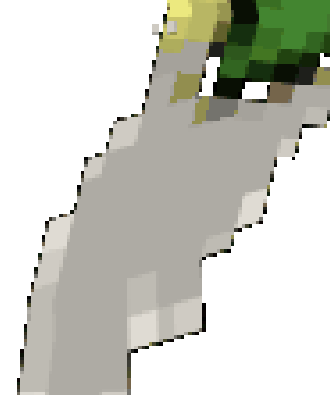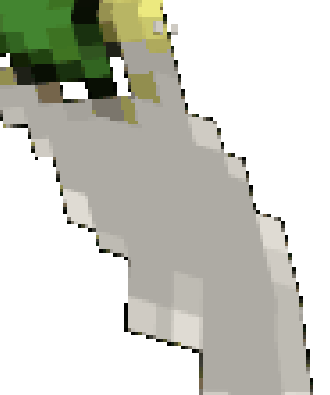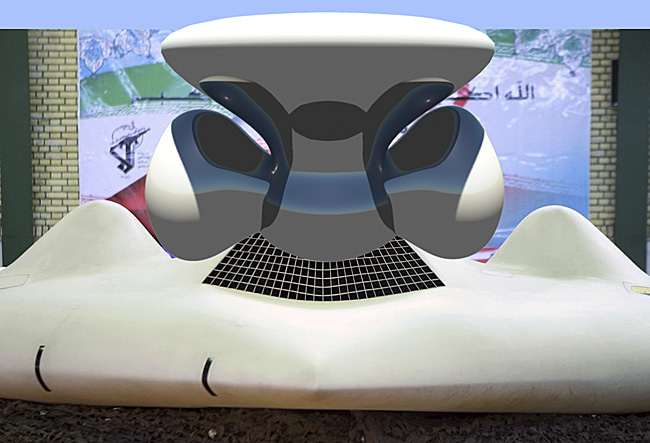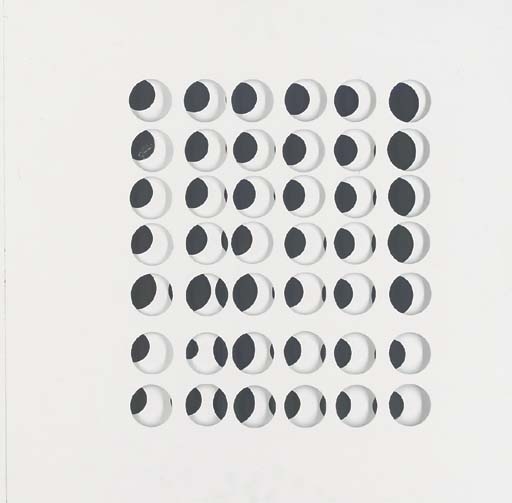
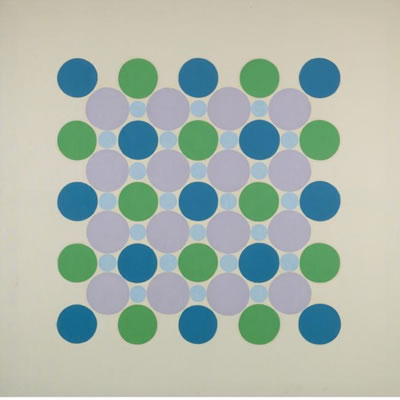
These works "found on the internet" have almost nothing in common beyond grids of circles. Bury was a European proto-Op kinetic artist and Downing was a member in good standing of the Washington Color school, painting large "stain" style canvases on cotton duck.
Am guessing the Downing work above is vastly larger than the Bury in real life. The Bury suggests lunar phases as well as cartoon googly eyes all looking left. Am not sure of the medium.
Downing was a student of Kenneth Noland's and worked almost exclusively with dots and uninflected pigment. Like Paul Feeley's work, his canvases give a softening touch to otherwise precise, machinelike patterns.
Speaking of Noland & Co, Washburn gallery is showing some early 1960s Ray Parker paintings. Am looking forward to seeing them later in the week. Parker would be considered a second generation Abstract Expressionist but that '60s work, with its large bold color blobs, forges a missing link between Rothko and the Noland school.
To bring our theme of computer-represented abstraction full circle (commencing with the jpegs above), here is a simulated Ray Parker, painted last night.

